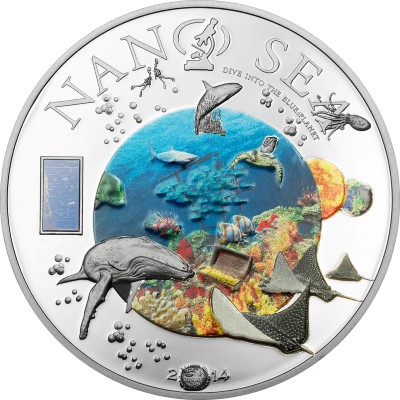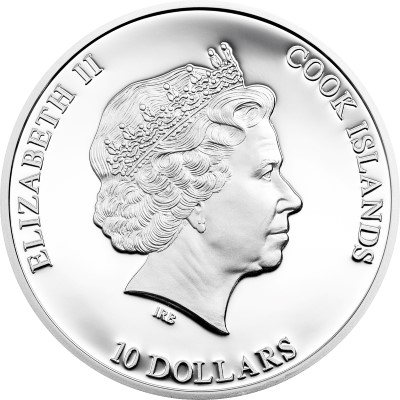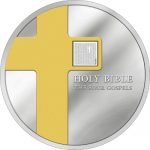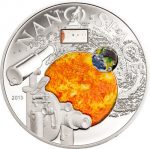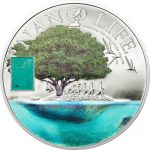Cook Islands – 2014 – 10 Dollars – Nano Sea (including box) (PROOF)
€ 199.95
In stock / on backorder
Description
Issue date april 2014. Delivery after issue date.
Metal: Silver .925
Weight: 50g
Size: 50 mm
Quality: PROOF
Mintage: 1’000 pcs
The latest coin in the Nano series is the Nano Sea. For the first time, the Nano Chip is provided with a colour gradient which impressively presents the depths of the sea.
Almost three-quarters of our planet is covered by water. 90 percent of the expanse of water is spread out amongst the three large oceans – the Pacific Ocean, the Atlantic Ocean and the Indian Ocean. Additionally, there are a number of semi-enclosed seas. Depending on where they are located, one speaks of a Mediterranean, an inland or a marginal sea. The deepest spot at just over 11‘000 m is situated in the Mariana Trench in the western Pacific.
The offshore biosphere is divided into pelagic zones. The topmost zone, the epipelagic, reaches up to 200 metres. The largest biodiversity of animal and plant species are found there because this living environment is still flooded with sufficient light, moderate temperatures, and enough water pressure, making it still relatively friendly to life forms. The area between 200 m and 1000 m is called mesopelagic. This part only has sparse blue light and is already regarded as the deep-sea. In the bathypelagic zone (1000 m to 4000 m) there is a 400 bar pressure which equates to 400 times higher than on the ocean surface. The zone from 4000 m to 6000 m is referred to as abyssopelagic. The last zone, the hadopelagic, is the deepest section and reaches 11’000 m. Although the water pressure already amounts to 1100 bar and the temperatures are close to freezing, living organisms exist here as well.
Nowadays, we know more about the moon than about our oceans. Especially the exploration in lower layers is an extremely difficult undertaking and is certainly far from being concluded. We can eagerly await the results future deep-sea research will bring.

